Abstract 10/2014
Table of content
Stanisław Majer – 135 years of trams in Szczecin
Krystian Pietrzak – Szczecin Metropolitan Railway as an axis of public transport of the Szczecin Metropolitan Area
Sebastian Jan Sołowij – Szczecin city bike as a function of complementary transport
Anna Wiktorowska-Jasik – Analysis of selected elements of Szczecin logistics system
Piotr Niedzielski, Małgorzata Skweres-Kuchta, Zuzanna Kłos-Adamkiewicz – Service sector development in Szczecin towards mobility management for traffic generators
Oliwia Pietrzak – Analysis of collective passenger transport organization in the Zachodniopomorskie voivodeship
Iouri N. Semenov, Wojciech Ignalewski, Maja Chmielewska – Przybysz – Probability of appearance of emergency situations during the CNG transport in the inland shipping from the terminal LNG in Świnoujście
Abstracts
Stanisław Majer
135 years of trams in Szczecin
Abstract: Trams in Szczecin carry annually some 65 million passengers, i.e. approximately 45% of all city passengers. Since the launch of the first horse tramway line in Szczecin with a length of over 5 kilometers has passed 135 years on August 23rd, 2014. It is a good reason to analyze the tramway system in Szczecin from the beginning until today. In the first part the paper presents the period up to 1945. After nearly 20 years of horse trams the electrification process had begun and it was almost completed by the year 1897. Expansion of tramway in this period lasted until the end of 20’s of the twentieth century, reaching the length of 50.3 kilometers. The next part of the paper presents the post-war years, i.e.: the reconstruction of war damage and development of tram network. The main effort at the beginning was put on tracks reconstruction, and later, the new tram tracks were built, including loop tracks. The last passing siding at the Gocław terminus was removed in 1973. Furthermore, the investments for the improvement of the technical condition of tracks in recent years were discussed. The currently used tram vehicles characteristics as well as transport tasks size are discussed. Recent investments in the new fleet resulted in decreasing of the average age of tram cars from 35 to 20 years. In addition, the reconstruction works of tracks allowing use of low-deck cars. The final section presents the planned investments by the city of Szczecin in infrastructure and new tram car fleet in a perspective of EU funds for the period 2014-2020.
Key words: urban transport, public transport, tram
Krystian Pietrzak
Szczecin Metropolitan Railway as an axis of public transport of the Szczecin Metropolitan Area
Abstract: The article is a follow-up of consideration concerning possibilities of the Szczecin Metropolitan Railway launch which was presented in this magazine in 2008[1]. In the article author’s idea of the Szczecin Metropolitan Railway as an element of transport system which in future may compose the main element of the transport axis of the Szczecin Metropolitan Area is presented. The main goal is to show assumptions of successive phases determining implementation of the concept with a special focus on main projects in each phase. Topicality of the topic coming out of the large then nowadays exploitation in future of rail transport in regional and commuter transport services which is considered by the voivodeship’ authorities.
Key words: Szczecin Metropolitan Railway, urban rail, metropolitan railway, urban transport, urban transport, passenger transport
Sebastian Jan Sołowij
Szczecin city bike as a function of complementary transport
Abstract: Increasing number of bicycles proves not only the growth of prosperity of the society but also their preferences as far as mobility is concerned. In the agglomerations, not only large ones, a problem arises how to prepare space for operation of this mean of transport. In the situation with big number of vehicles travelling on the roads not only congestion but also space for parking is a challenge. Cities’ authority are searching for measures to organize a transport which does not cause congestion and is satisfying for all users. In the article the transformation of transport means is presented. Then accessibility to the transport is discussed and definition of accessibility and its division are given. Precursors involved in the study of availability were presented. There is also a division of bicycles presented. Changes in the perception of a bicycle as a mean of transport is discussed. The idea and scope of operation of rental bicycle system is presented. The article also includes information concerning the schedule, perspective of development and tariff of the Szczecin city bike as well as description of its function as a complementary public transport. It also provides rules of the use of urban bicycles.
Keywords: bike, public transport, transportation.
Anna Wiktorowska-Jasik
Analysis of selected elements of Szczecin logistics system
Abstract: The logistics system of the cityis deliberatelyorganized andintegratedwithin systemof space-economic flows ofmaterial goods,people and information. The essence ofthe systemis to enable theoptimization ofthe supplyprocess managementand ensuringan adequate level ofmobility for residents. The basis forachievinghigh rates ofefficiency ofthe logistics systemis adequatetransport infrastructureandeffective management of theprocessof movement. The article presentsstructure andthe most important componentsof the logistics systemof Szczecin.The main ideawas to describe selectedelements of systemsand to study theiradaptation tothe current needs ofthe city economyand residents.The articleshows the sub-urban transport system and transport infrastructureof Szczecin divided on branches. Author analyzedselectedinfrastructurepoints which are important forhandling of cargo flows.
Key words: citylogistics system, transport infrastructure, transportsubsystem, storage infrastructure
Piotr Niedzielski, Małgorzata Skweres-Kuchta, Zuzanna Kłos-Adamkiewicz
Service sector development in Szczecin towards mobility management for traffic generators
Abstract: The development of service sector, which involves the creation of new office space entails many challenges associated with mobility. New travels are generated both by new employees as well as their clients which makes the existing transportation system congested. In this case, the problem is multi-dimensional, because it includes not only increasing congestion resulting from increased car traffic, but also the lack of different modes of public transport. The article describes the problem of mobility due to the intensive growth of service sector. Authors present characteristics of modern services sector, focusing primarily on the city of Szczecin and the availability of various modes of transport in communication services selected traffic generators in the form of ten major office projects. Article presents analysis of the available parking spaces, bicycle infrastructure, information about transport modes. There are noticeable gaps on the aspect of mobility management and offering an alternative to individual transport using available means of transport. One of the proposed solutions is to create a Mobility Plans for individual traffic generators, which can contribute to a more rational use of different means of transport.
Key words: service sector, traffic generators, mobility management
Oliwia Pietrzak
Analysis of collective passenger transport organization in the Zachodniopomorskie voivodeship
Abstract: Characteristics of organization of the passenger transport system in the Zachodniopomorskie voivodeship is presented in the article. Description refers to 3 passenger transport subsystems: over regional range (including national transport – between regions (voivodeships) and international transport), regional range (including trans-border transport) and local range (including especially urban transport). Basic transport branches used for passenger services with reference to particular transport means together with the key destinations are indicated in the article.
Key words: passenger transport, collective transport, regional transport
Iouri N. Semenov, Wojciech Ignalewski, Maja Chmielewska – Przybysz
Probability of appearance of emergency situations during the CNG transport in the inland shipping from the terminal LNG in Świnoujście
Abstract: In order to guarantee continuous gas supply from the LNG terminal in Świnoujście to final consumer, possibility of application of different means of transport should be considered. Surplus of liquefied natural gas (LNG) after the re-gasification process might be compressed and then distributed as CNG. Transport of a compressed natural gas (CNG) should be taken under consideration. Because of dynamic development of technologies related to the sector of compressed natural gas (CNG) continuous improvement of safety and functionality of transport systems – with special regard to dangerous goods freight – is essential. These systems should be oriented at term delivery of materials to final consumer, should be also economically reasonable and meet all safety requirements. All ships, regardless of a size of freighted shipment have to meet safety requirements according to legal regulations of specific country and guidelines of classifying institutions, specially ships for dangerous goods as compressed natural gas (CNG) or liquefied natural gas (LNG). International classifying associations, including Polish Ship Register (Polski Rejestr Statków), Lloyd Register, Det Norske Veritas, Germanischer Lloyd or American Bureau of Shipping are issuing own construction and classification of ships guidelines. Precise risk assessment for ships in sea and inland navigation will contribute with joint safety system based on the measures for safety assessment.
Key words: CNG, safety, transport, inland shipping

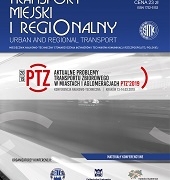
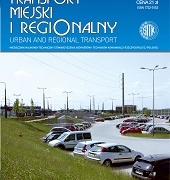 SITK RP
SITK RP 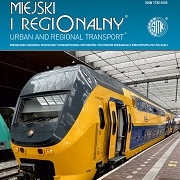 SITK RP
SITK RP 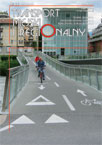 SITK RP
SITK RP 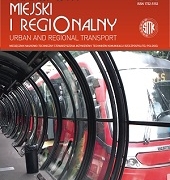
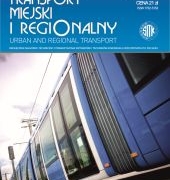 SITK RP
SITK RP 
 SITK RP
SITK RP SITK RP
SITK RP